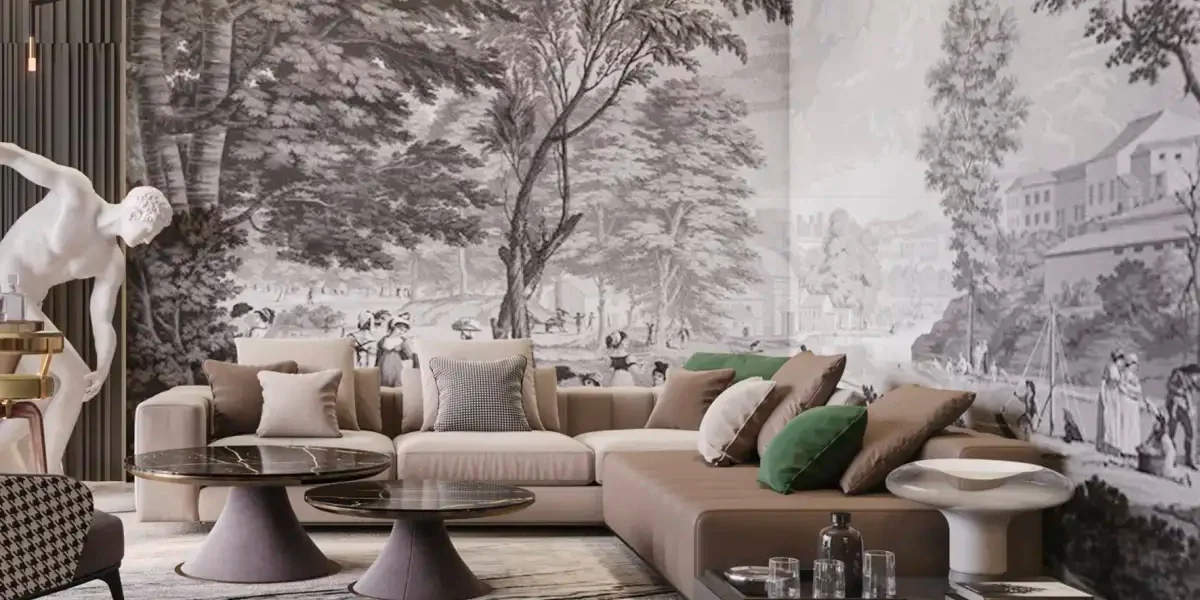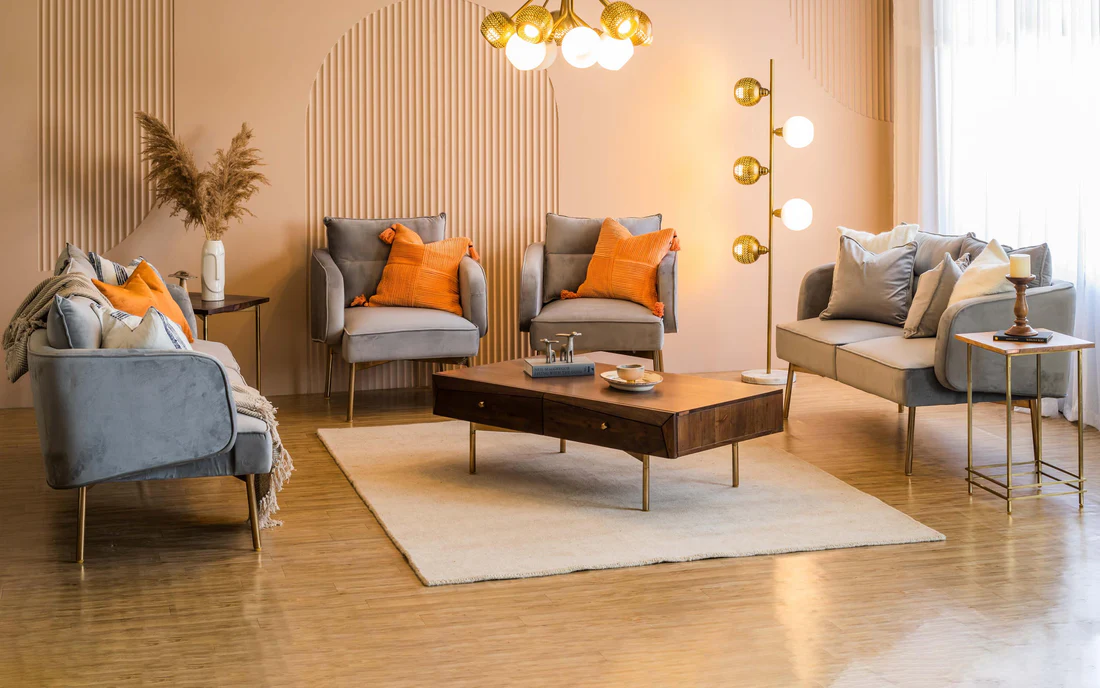Embarking on the journey of decorating your home can be both an exciting and overwhelming experience. The possibilities are endless, and finding a style that resonates with your personality, complements your space, and suits your lifestyle can be a challenge for anyone, especially beginners. Whether you’ve just moved into a new place or are looking to refresh your existing space, understanding the importance of style in home decor is essential to creating a space that feels both inviting and personal.
Home decor style is more than just aesthetics; it encompasses how your space functions, the emotions it evokes, and the way it reflects your tastes. While it may seem like a daunting task, designing your home around a specific style doesn’t have to be complicated. This beginner’s guide to style in home decor will help you navigate the vast world of interior design, offering practical tips, a breakdown of popular styles, and insights to ensure that your home feels like a true reflection of you.
What Is Home Decor Style?
At its core, home decor style is a specific approach to designing a space. It incorporates elements such as furniture, colors, textures, and layouts to create a cohesive atmosphere. Your chosen style is a direct reflection of your taste and can influence how a space makes you feel. For example, a minimalist style may create a sense of calm and order, while a bohemian style might evoke creativity and warmth. Style is an extension of your personality and can help transform a generic room into a space that feels uniquely yours.
In the world of interior design, style is often guided by cultural movements, historical periods, or geographical influences. Some styles are timeless, while others come and go with trends. But regardless of whether your style leans toward the modern or the traditional, the key is to create harmony within your space.
Understanding Your Personal Style
Before diving into specific design styles, it’s essential to understand your own preferences. After all, your home should reflect you and your lifestyle. Take a moment to ask yourself: What colors make me feel relaxed or energized? Do I prefer a clutter-free environment, or do I thrive on eclectic, layered spaces? Do I gravitate toward vintage items, or do I prefer clean, sleek lines?
Consider your daily routine and the functions your space needs to fulfill. For example, if you enjoy cooking and hosting, your kitchen and dining areas will likely require a different style than your bedroom or home office. Assessing how each space is used can help guide your design decisions. Once you have a general sense of your needs and preferences, you can begin to narrow down your decor style.
Popular Styles in Home Decor
The world of interior design is rich with diverse styles, each offering a distinct atmosphere and aesthetic. Let’s explore some of the most popular styles in home decor to help you understand what resonates with you.
-
Minimalist Style
Minimalism focuses on simplicity, clean lines, and functional design. It’s about stripping away excess and creating a serene and uncluttered environment. In minimalist spaces, furniture pieces are often neutral, with an emphasis on functionality over decorative flourishes. The color palette is typically composed of muted tones like whites, grays, and blacks, complemented by natural materials such as wood and metal. Minimalist design creates a sense of calm and order, making it ideal for those who prefer a tidy and serene atmosphere.
Key Features:
-
Clean lines and geometric shapes
-
Neutral color palettes
-
Less is more philosophy
-
Focus on functionality
-
Bohemian (Boho) Style
Bohemian style, often referred to as Boho, embraces a carefree, eclectic, and vibrant aesthetic. Inspired by global cultures, Boho design features rich colors, layered textiles, and an abundance of patterns. It’s a style that encourages mixing and matching furniture, textures, and accessories—creating a relaxed, lived-in look. The Bohemian style is perfect for individuals who love to infuse their home with personality, warmth, and a touch of wanderlust.
Key Features:
-
Vibrant colors and patterns
-
Layered textiles such as rugs, throw blankets, and pillows
-
Vintage and globally-inspired pieces
-
Eclectic, personalized furniture choices
-
Scandinavian Style
Inspired by the Nordic regions, Scandinavian design is all about simplicity, functionality, and the use of natural materials. It often features a combination of light wood tones, white walls, and a clean, streamlined aesthetic. Scandinavian homes are designed to be both practical and aesthetically pleasing, with a strong emphasis on creating a sense of warmth and coziness (often referred to as hygge). This style is perfect for those who appreciate simplicity and want to incorporate nature and light into their home.
Key Features:
-
Light color palette, often whites, grays, and natural wood
-
Focus on natural materials such as wood and stone
-
Clean, functional design
-
Cozy, inviting spaces with soft textiles
-
Industrial Style
Industrial design draws inspiration from the raw, unfinished look of factories and warehouses. It embraces exposed brick, metal, and concrete elements, often combined with vintage furniture and rustic finishes. Industrial spaces tend to feel spacious and open, with large windows and an emphasis on architectural details like exposed beams and pipes. This style is ideal for people who appreciate a more rugged, urban aesthetic.
Key Features:
-
Exposed brick and metal elements
-
Raw, unfinished materials
-
Large open spaces
-
Vintage or reclaimed furniture
-
Traditional Style
Traditional design exudes warmth, elegance, and a sense of timelessness. It is often characterized by rich wood furnishings, classic patterns, and refined color palettes. Traditional homes may include ornate details, such as crown moldings and antique furniture, and tend to incorporate elements that evoke a sense of heritage and history. This style is perfect for those who appreciate classic design and a more formal, polished atmosphere.
Key Features:
-
Rich wood furniture and classic fabrics
-
Neutral color palettes with warm tones
-
Detailed architectural features like moldings
-
Timeless and refined aesthetic
-
Modern Farmhouse Style
Modern farmhouse is a contemporary take on traditional farmhouse design. It combines rustic charm with sleek, modern elements to create an inviting and functional space. This style often incorporates wood accents, vintage furniture, and open shelving. Modern farmhouse is all about creating a warm, family-friendly environment that is both practical and visually appealing. It’s ideal for those who want the comfort of rustic elements with a modern twist.
Key Features:
-
A mix of rustic and modern elements
-
Natural wood finishes and exposed beams
-
Neutral color palette with pops of black and white
-
Cozy, inviting spaces
Practical Tips for Implementing Style in Your Home
Once you’ve chosen your style or a combination of styles, it’s time to put your vision into action. Here are a few practical tips for implementing style in your home:
-
Start Small: If you’re a beginner, don’t feel the need to redecorate your entire home at once. Start with one room, such as the living room or bedroom, and gradually build from there. Focus on making the space feel cohesive with furniture, colors, and decor that align with your chosen style.
-
Prioritize Functionality: While style is important, functionality should never be overlooked. Consider the practical needs of your space—whether it’s ample seating for your family or efficient storage solutions—and ensure that your furniture and layout meet these needs while still reflecting your chosen style.
-
Mix Textures and Materials: Even if you’re going for a minimalist or contemporary style, layering different textures can bring warmth and depth to your space. Pair smooth, clean lines with textured fabrics, wooden accents, or natural elements like plants to create a balanced and dynamic atmosphere.
-
Invest in Key Pieces: Certain pieces of furniture, like sofas or dining tables, often serve as the focal points of a room. Invest in quality pieces that will stand the test of time and match your style, but don’t hesitate to mix in secondhand or budget-friendly items to complement your main pieces.
-
Personalize Your Space: Don’t be afraid to infuse your personality into the design. Whether it’s through artwork, family photos, or unique accessories, adding personal touches makes your space feel like home.
Conclusion
Decorating your home with style is not just about following the latest trends or filling your space with beautiful furniture—it’s about creating a space that feels authentic to you. Whether you gravitate toward the clean lines of minimalist design or the vibrant layers of Bohemian decor, the key is to select a style that reflects your personality, needs, and lifestyle. By understanding different design styles, experimenting with textures, and making thoughtful choices, you can transform your home into a space that not only looks good but also feels right for you.









